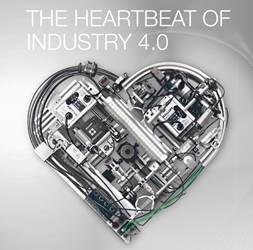These days almost every smart industrial device that comes to the market is advertised as “ready for IIoT.” But what does it actually mean? Before we get too technical, we should look at what the objectives are for IIoT and why it is important to the industrial age of our time.
In a previous post, “The promise of the Industrial Internet of Things (IIoT)“, we highlighted features such as Virtual IP address, to help address several things that plant maintenance and management would like to achieve. This blog touches those topics in a different perspective.
The concept of the Industrial Internet of Things (IIoT), or Industry 4.0, applies to the future of industrial automation, and these concepts heavily rely on the interoperability of a wide variety of devices and systems that communicate large amounts of data. This data is important because IIoT promises superior efficiency of machines and personalized manufacturing. Personalized manufacturing – also known as micro batch production or lot size one – means connecting with the customers at an individual level rather than connecting to masses. If efficiency and customization in production are the end goals or prime objectives for IIoT, these questions must be answered: What type of data would be necessary? Where and how is that data obtainable? In other words, what are the capabilities or characteristics of the device or system that really qualify as being “ready for IIoT”? Does simply providing an Ethernet connection to the device or adding a webserver qualify the device for IIoT? The answer is NO!
In my opinion, the following 5 key characteristics/capabilities, depending of course on the end user’s objectives, would qualify for being “ready for IIoT” tag.
If an end-user of automation wants to run the plant efficiently, the device or system should be able to provide information regarding; (1) Condition Monitoring, and (2) Automatic Parameterization
- Condition Monitoring enables predictive maintenance and eliminates unplanned downtime. Is the PLC or automation controller the right place for determining predictive maintenance? Maybe not. The PLC should focus on making sure the system is running effectively. Adding more non-application related stuff to the PLC may disrupt what is truly important. In most cases you would need a different PC or server to do this pattern analysis throughout the plant. A system or device with the “ready for IIoT” tag should be able to collect and provide that information to a higher level controls system/server. An example would be a power supply with IO-Link. Through the IO-Link master it tells the system about the stress or ambient temperature and predicts its lifetime.
- Automatic configuration or parameterization of sensors and systems. This feature enables plug-n-play benefit so that replacing devices is easy and the system automatically configures the replaced device to reduce downtime.
As IT and Controls Engineering work closer together, there are other characteristics of the devices that become important.
- Configurability of sensors and production line beyond controller of the system: Automation controllers in use today have physical limits of memory and logic. Today manufacturers are running multiple batches of different products on the same line which means more change over and more downtime. If the devices could allow for quick line change configurations such as set point changes for your sensors, different pressures on fluids, different color detections for the parts or even the ability to provide you with detection of the physical format change, that would significantly reduce your changeover times. In a PLC or controller, you can only build logic for factors known today (for ex. the number of configurations), but in the near future there will be additional product configurations. To be truly ready for the IIoT, you need devices that can be configured (with proper authorizations) in multiple ways. A webserver might be one of the ways – but that also has its limitations. Simple Network Management Protocol (SNMP) is widely used with several of the network management software tools in the IT world. OPC UA is another open communication protocol in industrial space. JSON is a protocol for cloud interface among many others. A device that can offer connectivity, via SNMP, OPC UA, JSON or other such open formats, to connect to other network software tools to gather information or configuration would solve several of these challenges without burdening the existing PLC or controller logic. In other words, these types of interfaces can connect your machine directly to an MRP or similar enterprise-level system which would make production floors much more efficient for quick changeovers.
- Capability for asset tracking, and quick troubleshooting: These features become important when there are hundreds of parameters changing and configurations evolving as your system becomes smarter and more efficient. To ensure right things are happening down the line, error-proofing your system becomes essential, and this involves additional information tracking. So the systems or solutions you choose should have these features.
- Scalability for the future: This characteristic can be interpreted in many different ways. But, in this blog it refers to adding features and functions as the need arises and building in capability to adapt to these changes is needed so that you are not starting from scratch again when the business needs to evolve again.
So, as we move into this new era of manufacturing, it is important to understand what the “ready for IIoT” tag on the device you are investing in means, and how it is helping you become more efficient or helping you connect to your customer one-on-one. Using IIoT to implement an ‘Enable and Scale’ plan would be the best way to meet the ever-evolving needs for the plant floor.
To learn more about IIoT and Industry 4.0 visit www.balluff.us.



One Reply to “What does that “Ready for IIoT” tag really mean?”